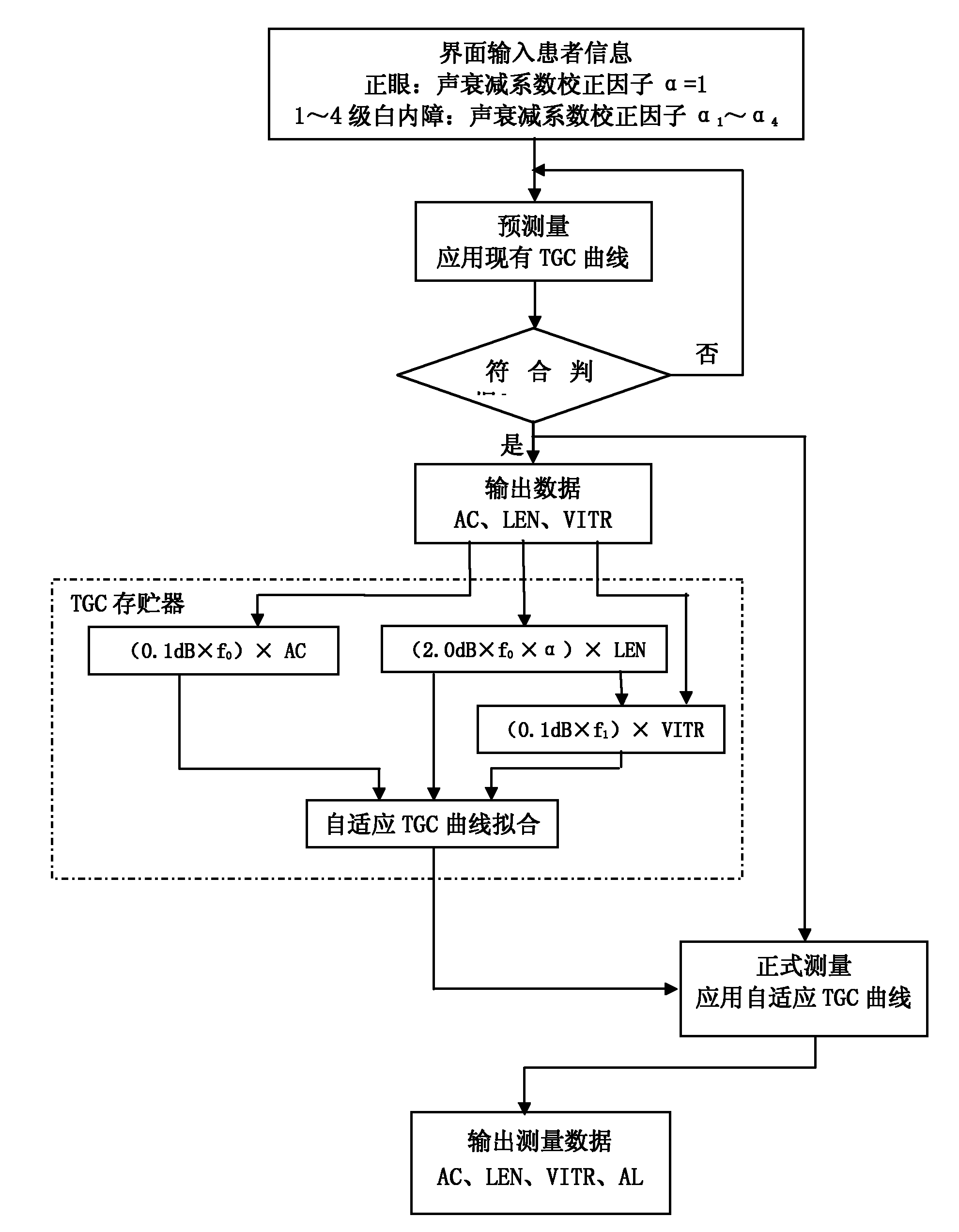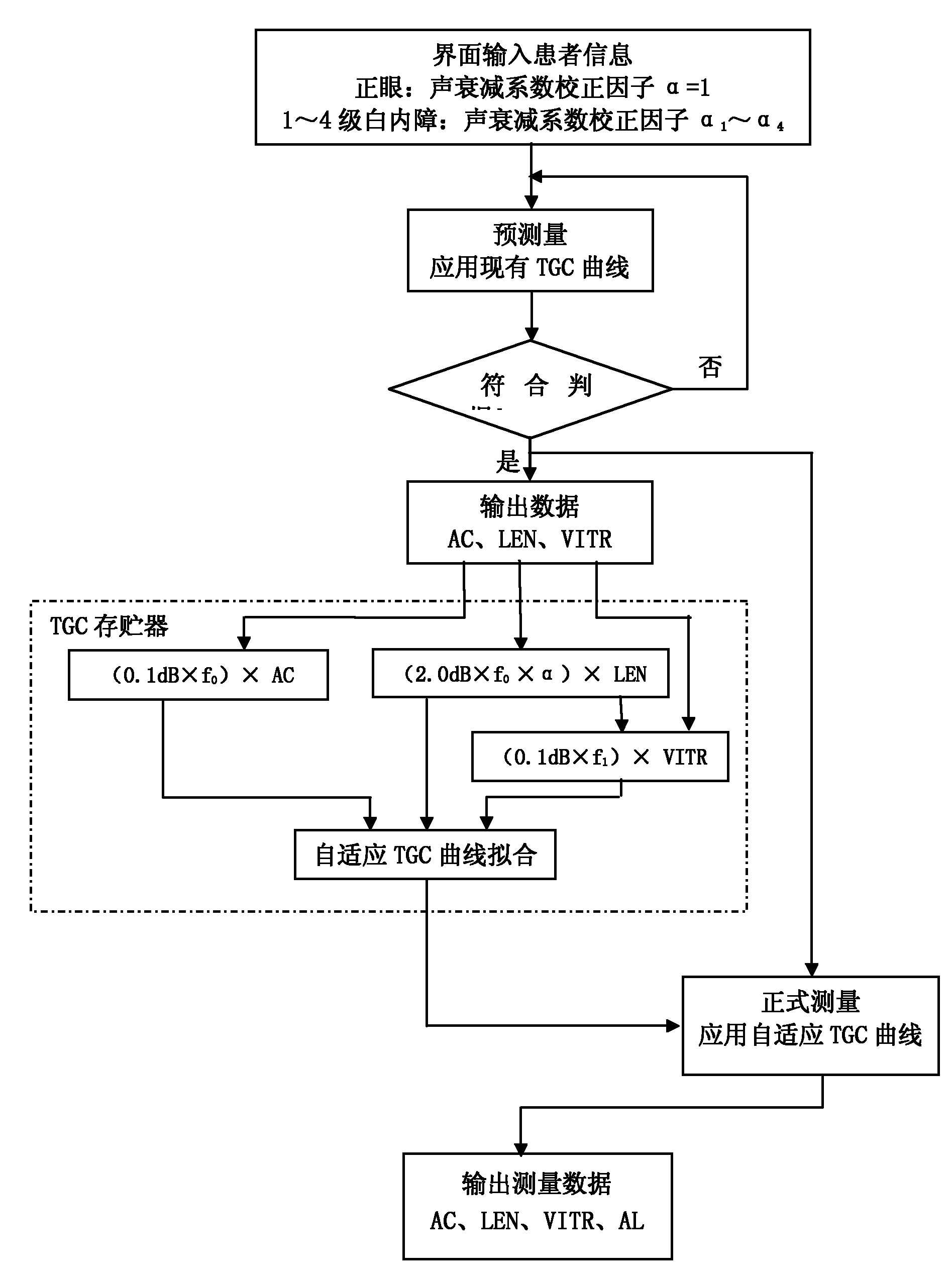Adaptive time-gain compensation method for use in ophthalmic ultrasonic measurement equipment
A technology of ultrasonic measurement and gain compensation, which is applied in the direction of eye testing equipment and eye examination, etc. It can solve the problems of increasing measurement error, amplitude difference of interface reflected wave, overcompensation, etc., so as to reduce delay time difference, improve measurement accuracy, The effect of accurate data
- Summary
- Abstract
- Description
- Claims
- Application Information
AI Technical Summary
Problems solved by technology
Method used
Image
Examples
Embodiment Construction
[0059] The adaptive time-gain compensation method applied in the ophthalmic ultrasonic measurement device of the present invention will be described in detail below in conjunction with the embodiments and the accompanying drawings.
[0060] The technical problem to be solved by the present invention is to simply and automatically call the "time-gain compensation" curve that conforms to the structural characteristics of the eyeball according to the specific condition of the eyeball physiological structure of the subject.
[0061] The direct purpose of "ultrasonic measuring equipment for ophthalmology" in clinical applications is not to obtain diagnostic results or health conditions, but to obtain the physiological parameter "ocular axial length" as an intermediate result from living human or animal bodies; this information itself cannot It is the intermediate data that needs to be measured for the implementation of intraocular lens implantation to directly obtain the diagnosis r...
PUM
 Login to View More
Login to View More Abstract
Description
Claims
Application Information
 Login to View More
Login to View More - R&D
- Intellectual Property
- Life Sciences
- Materials
- Tech Scout
- Unparalleled Data Quality
- Higher Quality Content
- 60% Fewer Hallucinations
Browse by: Latest US Patents, China's latest patents, Technical Efficacy Thesaurus, Application Domain, Technology Topic, Popular Technical Reports.
© 2025 PatSnap. All rights reserved.Legal|Privacy policy|Modern Slavery Act Transparency Statement|Sitemap|About US| Contact US: help@patsnap.com



